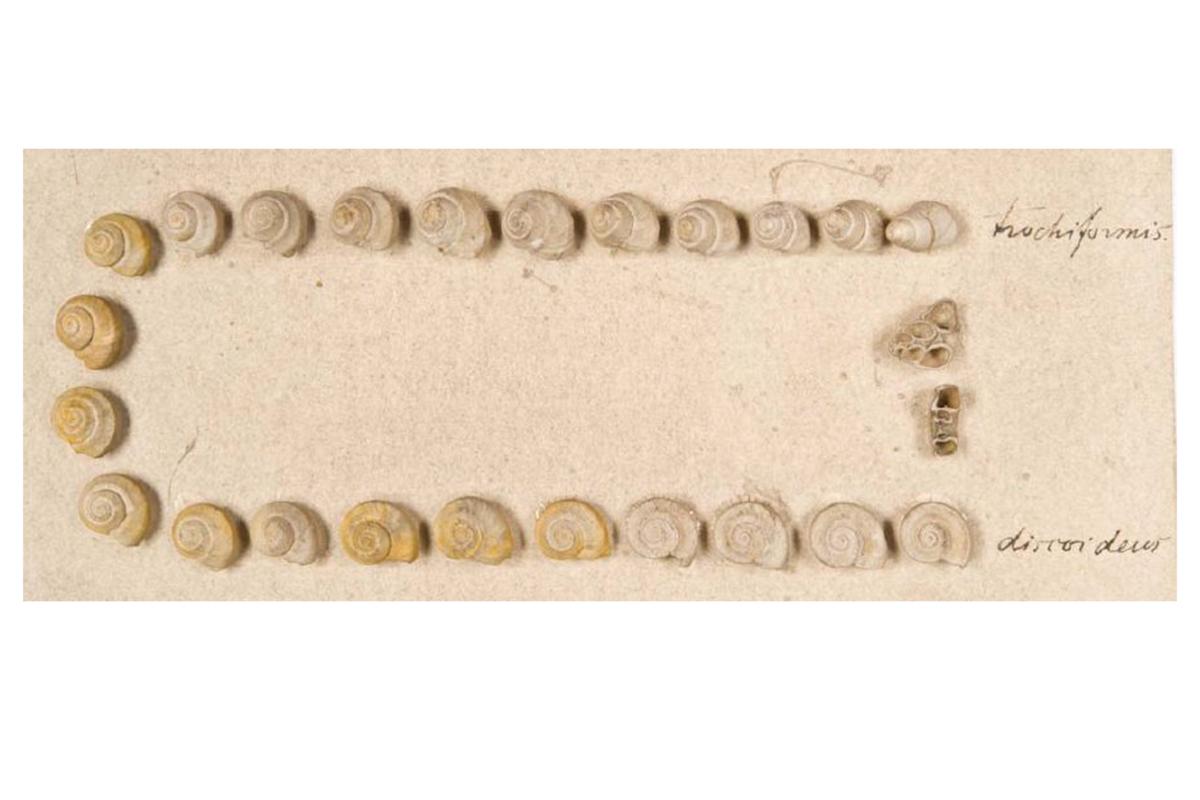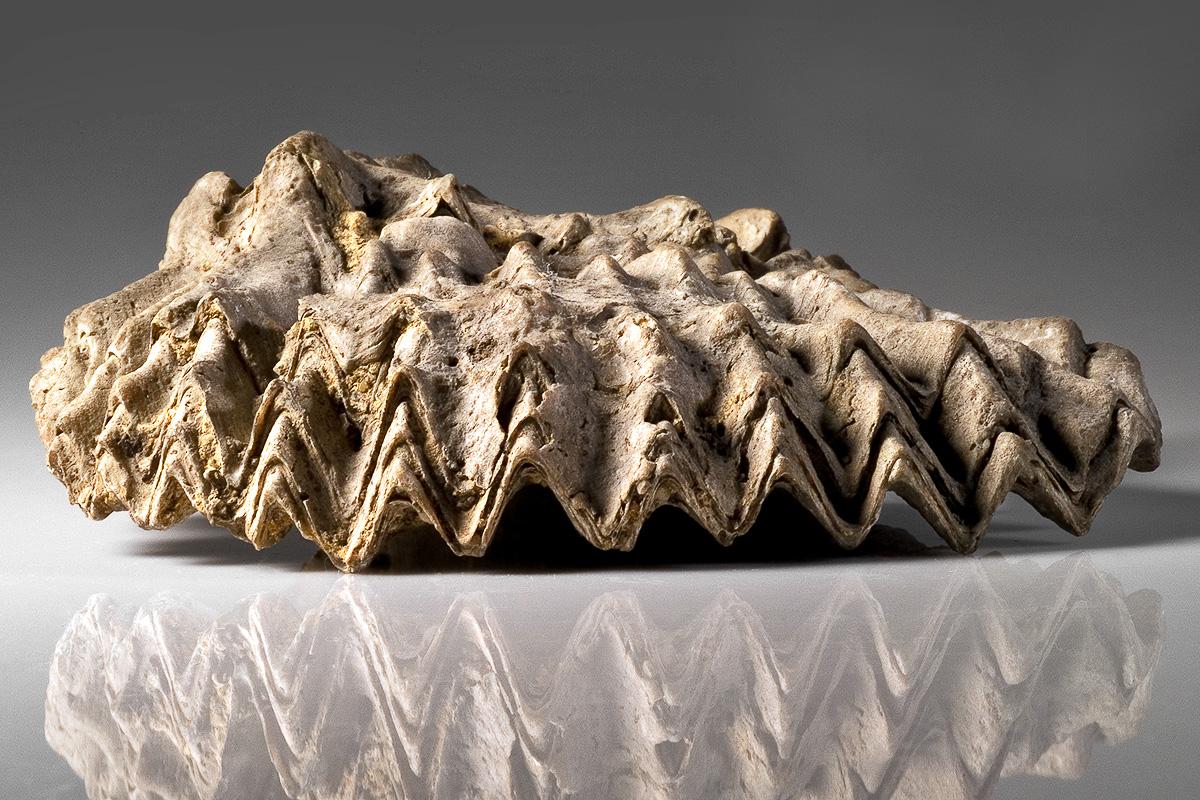Bivalvia, Gastropoda, Brachiopoda and Porifera
The extensive collection of fossil bivalves, snails, brachiopods and sponges comprises over 340,000 specimens. The groups Gastropoda (snails) make up approximately 165,000 specimens, bivalvia approximately 115,000 specimens, brachiopoda 55,000 specimens and porifera (sponges) approximately 5,300 specimens.
The items of the collection hail from all parts of the globe, with a geographical focus on Germany, Europe and the former German colonies. From a geological perspective, the collection focuses on the Devonian, the Mesozoic, the Palaeogene and, as far as gastropods are concerned, the Neogene.
The material consists exclusively of fossilisations. Most of the collection has been organised in systematic order. The collection contains significant type material and historically valuable originals for illustrations.
Digitisation
The collection has been partially entered into the palaeontological Access database at the Museum für Naturkunde.
History
The collection dates back to the collections of famous palaeontologists from the 19th century, such as Leopold von Buch (1774-1853), Ernst-Friedrich von Schlotheim (1764-1832), Heinrich Ernst Beyrich (1815-1896) and Friedrich August Quenstedt (1809-1889) and has outstanding historical value.
The systematic collection is complemented by various important statigraphic and regional subcollections. There are molluscs from the Upper Jurassic and Lower Cretaceous from Tanzania, in particular the dinosaur site Tendaguru; rudists from the Upper Cretaceous (Klinghardt Collection); Molluscs from the Upper Cretaceous and Palaeogene of the type region of the Maastrichtian (van Binkhorst Collection); Molluscs from the Cenozoic in Europe (Bamberg Collection); Molluscs from the North German Oligocene (Hubach Collection); Molluscs from the Miocene in Egypt (Schweinfurth Collection) and brachiopods from the Devonian in the Rhenish Massif.
Planorbis multiformis aus dem Steinheimer Becken, Coll. Hilgendorf

